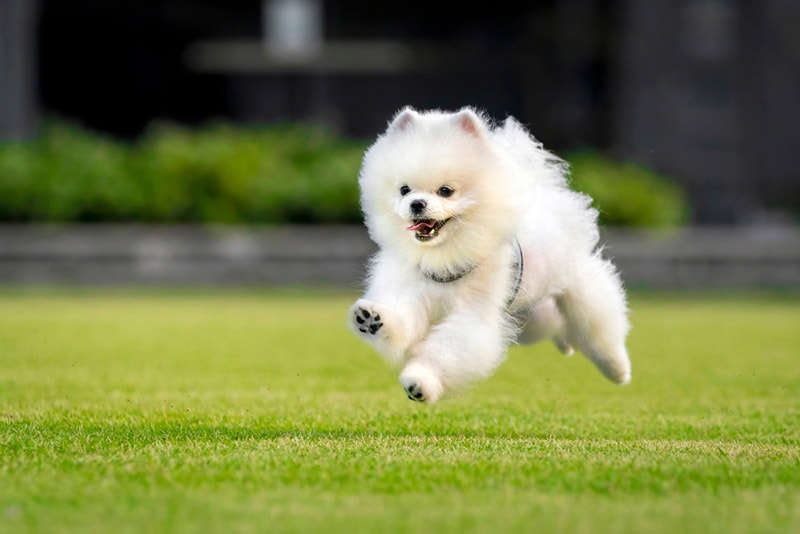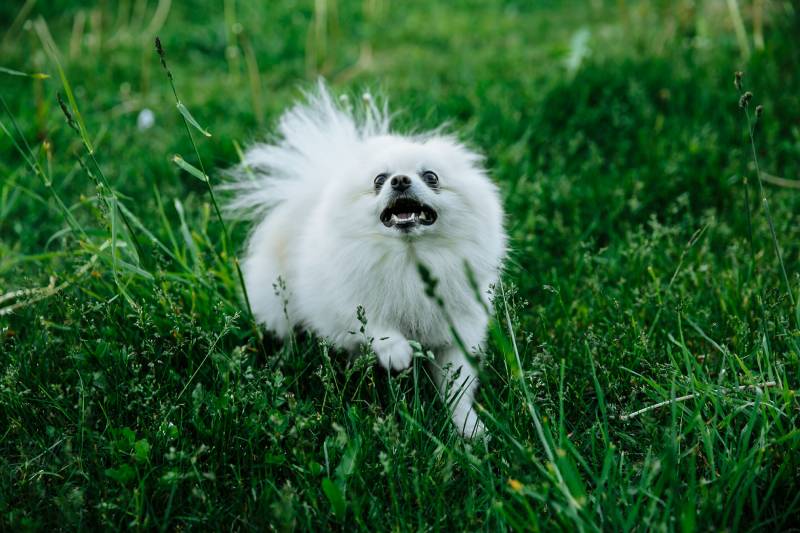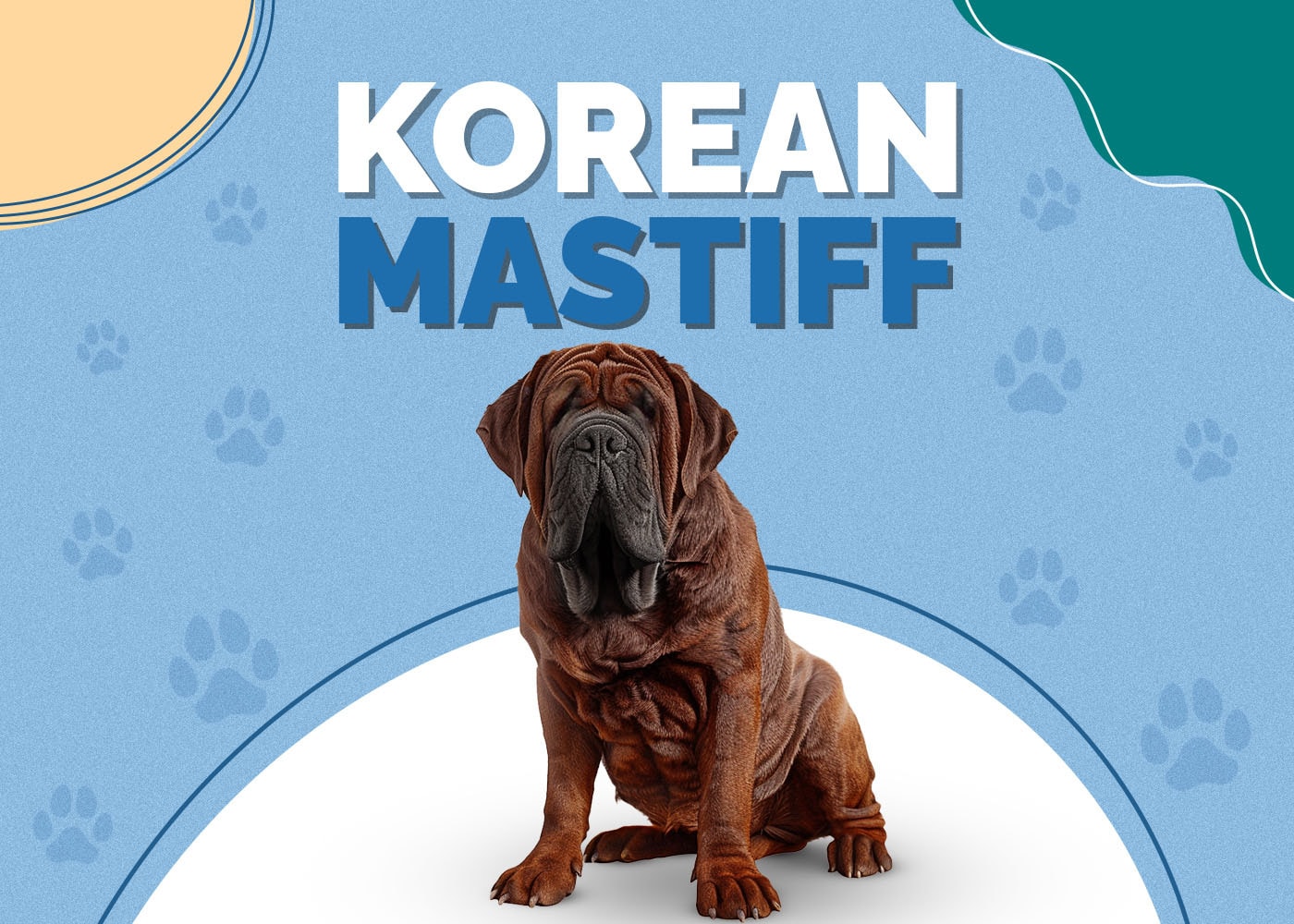White Pomeranian: Facts, Origin & History (With Pictures)

Updated on

White Pomeranian’s most distinct feature is their pure white fluffy coats with no markings. The double-layer fur makes them resemble tiny balls of super soft, snow-white wool. And their lion’s mane makes them look bigger than they are. Mature White Pomeranians weigh between 4–8 pounds with a height of 6–7 inches.
The stunning aesthetics of White Pomeranians can make anyone fall in love with them at first glance. But do these cute dogs make good pets?
Read on to learn more about the White Pomeranian. We will discuss facts about the dog breed, including its appearance, temperament, and care needs. Furthermore, we will take a deep dive into their origin and history.
The Earliest Records of White Pomeranians in History
The specific country of origin of the White Pomeranian is unclear, although the breed is believed to have evolved from parts of Europe and Asia. It is a descendant of a long line of Arctic work dogs found in the Pomeranian regions of Poland. While the Arctic work dogs look like wolves and boast huge and muscular physiques, they were bred down to create smaller dogs, ideal for providing pet companionship.
At first, Pomeranians were classified as German Spitz. They resembled other Spitz breeds with curly tails, thick, double coats, and prick ears. Depending on the region, they went by many names, including Bear Spitz, Wolf Spitz, Lion Spitz, and Great Spitz. By 1886, Pomeranians had adopted the name German Toy Pomeranians.
How the White Pomeranian Gained Popularity
The Pomeranian, at the time known as a “wolf dog,” enjoyed the spotlight in England after becoming a pet in the English monarchy. Queen Charlotte brought her White Pomeranian (imported from Germany) to England in 1761 after marrying King George III.
During a visit to Florence, Italy, in 1888, Queen Victoria met the White Pomeranian for the first time and fell in love with the dog. She did some breeding of her own to develop the toy breed as we know it today. Queen Victoria is believed to have bred down the Pomeranian by 30 pounds.
As a tiny companion dog, the White Pomeranian has been a lap dog for numerous creative minds over the years. They include Mozart, who had a Pomeranian named Pimperl, Frédéric Chopin, Martin Luther, Sir Isaac Newton, and Michelangelo di Lodovico. However, it is Queen Victoria that popularized the dog breed in the 1800s.

Formal Recognition of the White Pomeranian
It was not until 1900 that the White Pomeranian gained formal recognition from the American Kennel club. The dog breed is today recognized by all dog clubs globally. This includes the UK Kennel Club, American Kennel Club, United Kennel Club, Canadian Kennel Club, New Zealand Kennel Club, Australian National Kennel Club, and the Federation Cynologique Internationale.
To qualify as a true White Pomeranian, each dog must have the original breed color—snow white. The dog must not have any markings or cream shadings, and the undercoat must also have a solid white color. Furthermore, the eyes and nose must be dark colored, if not black.
Top 4 Unique Facts About White Pomeranians
White Pomeranians are gorgeous dogs with sturdy and well-proportioned bodies. These miniaturized Spitz-type dogs are active, friendly, and intelligent, making them a top choice for folks that desire a cheerful furry companion.
Here are four unique facts about the White Pomeranian.
1. They Have a Petite Appearance
The White Pomeranian is a “toy” dog that reaches a height of six to seven inches with a weight of three to seven pounds. They reach their mature size at seven to ten months and maintain a compact physique for the rest of their lifespan.
Looks-wise, White Pomeranians have a fox-like appearance because of their erect ears and bright dark eyes. They have short backs and fluffy high tails that curl up before lying flush on their backs. While Pomeranians come in various colors and patterns, White Poms are snow white with no shadings of yellow or cream. They have pink tongues, dark-colored muzzles, and black foot pads.

2. This Breed Has an Extra-Fluffy Coat
White Pomeranians have a luxuriant fluffy double coat. The double-layer coat has a short, dense undercoat and longer guard hairs to protect the small-sized canine from weather elements. The snow-white fur is fluffier around the neck and chest, making the small pups look lion-like!
If you are an allergy sufferer, it’s best to consider other dog breeds that don’t shed heavily. White Pomeranians are heavy shedders that shed all year round. They shed more in spring and fall, making it necessary to up your home vacuuming routines.
Moreover, the luxurious coats of White Pomeranians call for more frequent grooming sessions. To keep your pup’s coat elegant and tip-top, brush and bathe it at least twice weekly. Occasional trips to your groomer are also necessary to get those fab-looking fur trims.
3. White Poms Have a Great Personality
White Pomeranians are friendly, active, intelligent, and highly vocal. Their high energy levels make them excellent companions for people that want to play, cuddle, and even hike with their dogs. Because they are descendants of Arctic work dogs, they are alert, loyal, and protective. You can expect your pup to bark uncontrollably if it notices something out of place.
Behavior-wise, White Pomeranians mimic the temperaments of their owners. You can tell the major traits of a White Pomeranian’s owner based on the dog’s temperament. It copies everything from its owner’s self-concept, interests, drives, and emotional patterns.
If you are generally chilled and quiet, your dog will show the same personality!

4. They Have a Long Life Span
White Pomeranians are sturdy canines, especially if fed well and offered appropriate exercise. Under the right conditions, they can remain fit with few or no health problems. Compared to other small breeds, they have a relatively long lifespan, with a longevity range of 12 to 16 years.
Does the White Pomeranian Make a Good Pet?
White Pomeranians make excellent pets for more than just their unique aesthetics. They are friendly, energetic, playful, and intelligent. Training them is a breeze, and they thrive in obedience competitions. They are quick to learn tricks and will shorten long days as they perform the mastered theatrics.
Although White Pomeranians are kid-tolerant, they are not as sturdy as larger dog breeds. It is best to monitor play sessions with kids, especially if your little ones love rough games. Also, these dogs can snap or bite if they feel threatened. If you have toddlers who don’t understand the boundaries and respect demanded by the pet, it’s better to consider other dog breeds like a Labrador Retriever or Bull Terrier.
While White Pomeranians can’t knock down a burglar, their vocal nature makes them excellent alarm dogs. They are generally easy to keep because they love their independence and are naturally active. However, these dogs are picky eaters and need regular exercise and grooming.
Conclusion
White Pomeranians are terrific dogs for their striking looks and charming personalities. They are active dogs that love to run, tumble, chase, and perform tricks. Moreover, they are excellent watchdogs thanks to their alert attitude and tendency to bark.
Featured Image Credit: Tam and Trace Photography, Shutterstock













